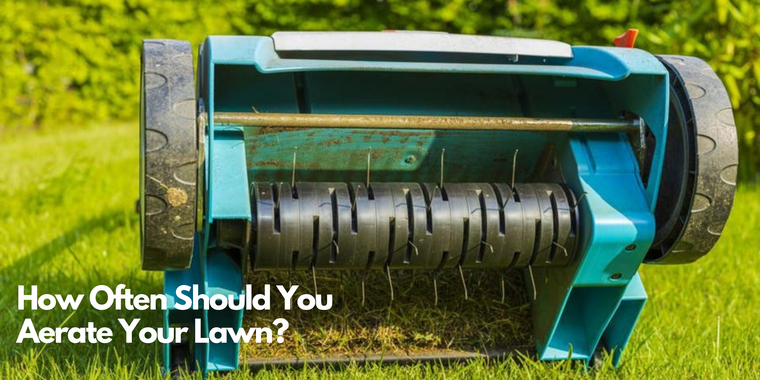
Aerating your lawn increases the flow of oxygen, water, and nutrients to the grassroots, which helps it stay green, healthy, and growing through hotter months as well as cold ones.
So how often should you aerate your lawn? The answer will depend on the type of soil your lawn has and how long it’s been since you last aerated it, but in general, you should expect to aerate your lawn at least once every year if you want it to thrive.
Read on to learn about the different types of aeration tools available and how to choose the right one for your needs.
Click Here & Get Up to 3 Tree Service Quotes Now!
Benefits of regularly aerating your lawn
A healthy lawn will have a deep, dark green color and should feel thick and plush under your feet. If you’re not sure whether your lawn needs aeration, look for these signs: Thatch – Thatch is the grass that has begun to grow but gets shaded by a layer of soil.
When it’s cut too short or not cut at all, thatch grows faster than grass can grow. Too much thatch isn’t just unsightly; it creates an environment where disease and insects can thrive. The best way to control thatch is to maintain a healthy lawn with regular mowing, fertilizing, and aeration.
Compacted soils – When water travels through compacted soil instead of flowing through spaces between sand, silt and clay particles, it runs off in sheets instead of trickling down into root zones.
This can cause erosion, muddy puddles, and unhealthy plants because there’s no water to reach their roots. Compacted soils are often caused by high traffic from gardening equipment or pets—or even people walking on areas around your home that drain directly into your lawn.
Allowing rainwater to soak into compacted soil helps keep mud from forming on sidewalks and dries out quickly after a rainstorm so nothing is splashing up onto patios and decks during mealtime.
When to aerate in fall
Many of you are probably wondering when to aerate your lawn. The truth is, aerating your lawn in fall isn’t going to do much because the grass is dormant at that time of year. The best time to aerate is in early spring before it gets too hot out or too dry.
A cool-season grass like Kentucky bluegrass will be growing quickly, which means you'll see results from an early-spring aeration session pretty quickly. However, if you wait until spring to aerate and find out that's not soon enough for your grass—or if you live in a climate where it rains all winter—that's okay. It's possible to wait until mid-summer or even later and still see results from an aeration session!
Just keep in mind that aerating when temperatures get into double digits will take its toll on your lawn; roots exposed to that kind of heat levels may die, leading to brown patches and other problems.
For most homeowners, summertime aeration just doesn't work as well as springtime does. So, what should you do if you don't have ideal weather for summer aeration?
Get started right away by doing some pre-aeration prep instead: rake up dead leaves and clear branches/sticks/clippings out of your yard to make sure they don't go flying everywhere during your first few passes with an aerator machine! (Keep them nearby though so you can put them back!)
Finally, be aware that fall is often a great time to add compost.
When to aerate in spring
Spring is a great time to aerate your lawn because you can fix any problems before summer temperatures and wear-and-tear. Before aerating, check out your lawn for other issues that may contribute to poor quality.
If you’re noticing certain patches of thinning or dead grass, it might be time to fertilize. You also want to make sure that your lawn doesn’t have an excess of thatch—or grass clippings or roots growing in places they shouldn’t be. If all looks good, now is as good a time as any!
In general, aeration helps maintain healthy growth while increasing drainage and improving nutrient uptake. Remember: fall aeration sessions aren’t necessary if you live in a climate with hot summers but mild winters (northern states). In these climates, late winter/early spring is optimal so that new growth isn't damaged by cold spring frost.
Tips for maintenance
In order to maximize your lawn’s health, you’ll want to aerate at least once a year. By doing so, you provide relief for plant roots and allow for healthy root growth to develop. If you have high-traffic areas of your lawn that have been compacted by frequent foot or car traffic, it may be wise to get an aerator out more often than once per year.
How often should you aerate your lawn if you’re having problems with it? It depends on what kinds of problems they are, but in most cases, once every two years is a good idea (at least). A professional will help diagnose issues like nutrient deficiencies or soil compaction and then offer targeted solutions.
Again, these services aren’t necessarily cheap—you can expect to pay around $500 for a typical treatment—but they're well worth it if you're planning on keeping your lawn looking great. Are there any special tips for maintaining my lawn during winter?
Making sure your grass gets enough water can sometimes be a challenge during cold months; after all, no one wants to stand outside freezing their butt off just because it's wet! Try setting up automatic sprinklers in cold weather; chances are there'll still be some precipitation and indirect sunlight helping give them energy. Using smart watering techniques like pop-up sprayers is also important since direct precipitation isn't really an option when temperatures are below freezing.
1. Register your company
2. Create a searchable listing
3. Connect with more clients
